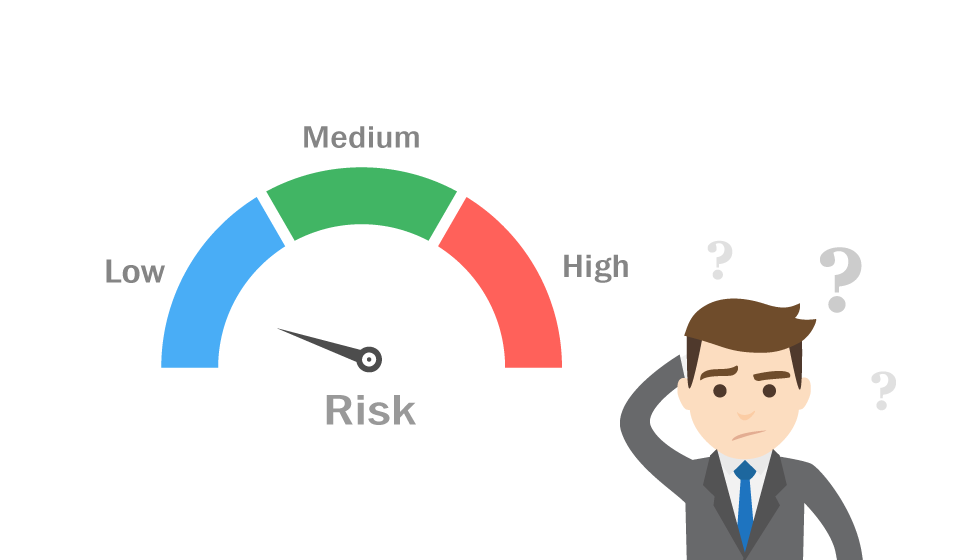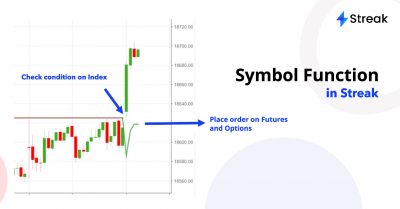Risk management is perhaps the most important aspect of a strategy apart from trading psychology. In my previous article, I had discussed a common confusion with the Stochastics oscillator. In this article, I will discuss a couple of brilliant new features that would enable users to manage their risk better. These features have been added very recently and I will try to touch upon each of them briefly.
Absolute and points-based Target and Stop Loss
Earlier users could only use a Target(TP) and Stop loss(SL) percentage, which enabled them to apply the same strategies on stocks of different price categories. Now traders can set Target and Stop loss in three different forms.

Let us understand each of them briefly.
- Points type TPSL: Using Points(pts) based Target/Stop would set a fixed point risk-reward per quantity. For example, you want to risk only 15 points on a stock priced INR 285, irrespective of the quantity and the target you are looking for is 35. So the risk-reward is a little over 1:2. Setting a pts TP/SL with 10 qty would mean that you are willing to risk 15×10 for a reward of 35×10. Similarly, if you trade using 100 qty, your target and SL would be 3500 and 1500 respectively.
- Absolute type TPSL: Using Absolute(abs) based Target/Stop would set a fixed risk-reward per trade. Using the same example, you want to risk only 1500 points on a stock priced INR 285 per trade and the target you are looking for is 2850. So the risk-reward, here, is 1:1.9. Setting a abs TP/SL with 100 qty would mean that you are willing to risk 1500/100 for a reward of 2850/100. Now, if you trade using 1000 qty, your target and SL would be 1500/1000 ie.1.5 and 2850/1000 i.e 2.85 respectively. If you trade using 10 qty, your target and SL would be 1500/10 ie.150 and 2850/10 i.e 285 respectively. Here even if Risk-to reward remains the same, the Target and Stop per quantity changes.
- Percentage type TPSL: Using a Percentage(pct) based Target/Stop is quite straightforward, the percentage risk-to-reward per quantity would remain the same, similar to Point-based TP/SL. The advantage with the percentage-based method is that you can have a stock priced at INR 2000 and a stock priced at INR 85 in the same strategy. The system would calculate the Stop and Target based on the percentage and stock price and send an exit notification accordingly.
Capital and Risk based position sizing
Sizing your position according to your risk is a very important part of Risk Management. Now traders can mention their Risk Management parameters and the system can also calculate and deploy your position accordingly. Two different types of position sizing has been added. Let us understand them now
Capital-based position sizing: This is just another way of saying I have X amount of capital that I want to trade, and the system should calculate my position size accordingly. For example, I have 1.5 lacs and I want to allocate a maximum of INR 10,000 per position. So I would simply head over to the Advanced section in the Create page and select the “Position Sizing Type” as Capital based and set the “Max Allocation” to 10000.

The system, depending upon the stock you have selected, would divide the Max Allocation with stock price and calculate the size of the position. For HDFCBANK, priced at 1412.40 (during the time of writing this article), the system would calculate the size of the position as 10000/1412= 7.08 ~ 7 quantity. For SBIN, priced at 333.85(during the time of writing this article), the system would calculate the size of the position as 10000/333.85= 29.95 ~ 29 quantity.
Risk-based position sizing: This method of sizing a position requires two inputs from the user – Max SL per trade and Max SL per quantity. It is commonly used by many active traders. It has been discussed in detail in Varsity under Kelly’s Criterion. Risk-based position sizing can be used with Pts and Pct-based TPSL only. Let us understand how each of them works in Streak
a. Risk-based position sizing with Points type TPSL: Suppose you want to risk INR 2200 per trade and you have set a Point(pts) based SL:Target as 15:35.

So you want to risk a maximum of INR 2200 per trade and INR 15 per quantity, so your ideal position size should be 2200/15=146.67 ~ 146 quantity. So if the stock, discussed in the first example with the current market price of INR 285, falls to 270, your SL will get triggered and you would lose, 146×15=INR 2190 on the trade, which is within your Max SL Limit.
b. Risk-based position sizing with Percentage type TPSL: Suppose you want to risk INR 2200 per trade and you have set a Percentage(Pct) based SL:Target as 1:3. So you want to risk a maximum of INR 2200 per trade and 1% per quantity. Here the SL per quantity is dependent on the stock price. Hence, in the case of the same stock, discussed above, the SL would be 1% of INR 285 ie. 2.85. So your ideal position size should be 2200/2.85=771.93 ~ 771 quantity. If the price falls to 282.15, your SL would get triggered and you would be taking a loss of 2.85×771= INR 2197.35, which is within your Max SL Limit.
Note: when you change the Position sizing type to Risk-based the Max allocation field changes to Max SL per trade, as you can see in the images above.
Note: Max allocation does not assume any leverage. So, it requires setting the required notional value or a higher amount for a trade to trigger.
Daily Strategy Cycle
This feature would now enable users to test how a specific number of trades per day would fare. A Strategy cycle is an entry followed by a respective exit of the strategy. In the Pre-deployment windows, users could earlier set the number of cycles(trades) a strategy would take.

However, there was no option to test for example how one trade per day using a simple Opening Range Breakout logic would fare over 3 months. But now you can test the implication of taking a certain number of trades per would be like.
You can try backtesting these new features to refine your strategies and increase the probability of profit by managing your risk better. What do you think? Write to [email protected] with your feedback.












Please consider leverage price in capital-based position sizing. It gives a better idea of the amount we can deploy. It will be helpful in Mis orders.
Yes, Sathyaraj, this would be added with future updates.
I want to build simple strategy for investment purpose..
On every specific day of month… system should place market order at 3:00PM.. SIP Order
Size of the order will be decided based on current portfolio and ratio of its constituents. I want to maintain
EQ-ETF = 50%
Gold-ETF = 20%
Debt-ETF = 30%
This strategy will run forever… User do not need to do any manual intervention…
Somthing like Automated Mutual Fund rebalancing provided by N J Wealth
Currently, portfolio management cannot be implemented using Streak. However, this is interesting, and will definitely look into it.
I AM INDEED SPELL BOUND ABOUT THE ROBOTIC PERFORMANCE OF STREAK. GRADUALLY I WAS LOSING HOPE IN MY TRADING PERFORMANCE. NOW i FIND NEW HOPE OF LIVING. STREAK HAVE CHANGED MY TRADING PERSPECTIVE. THANX TO STREAK.